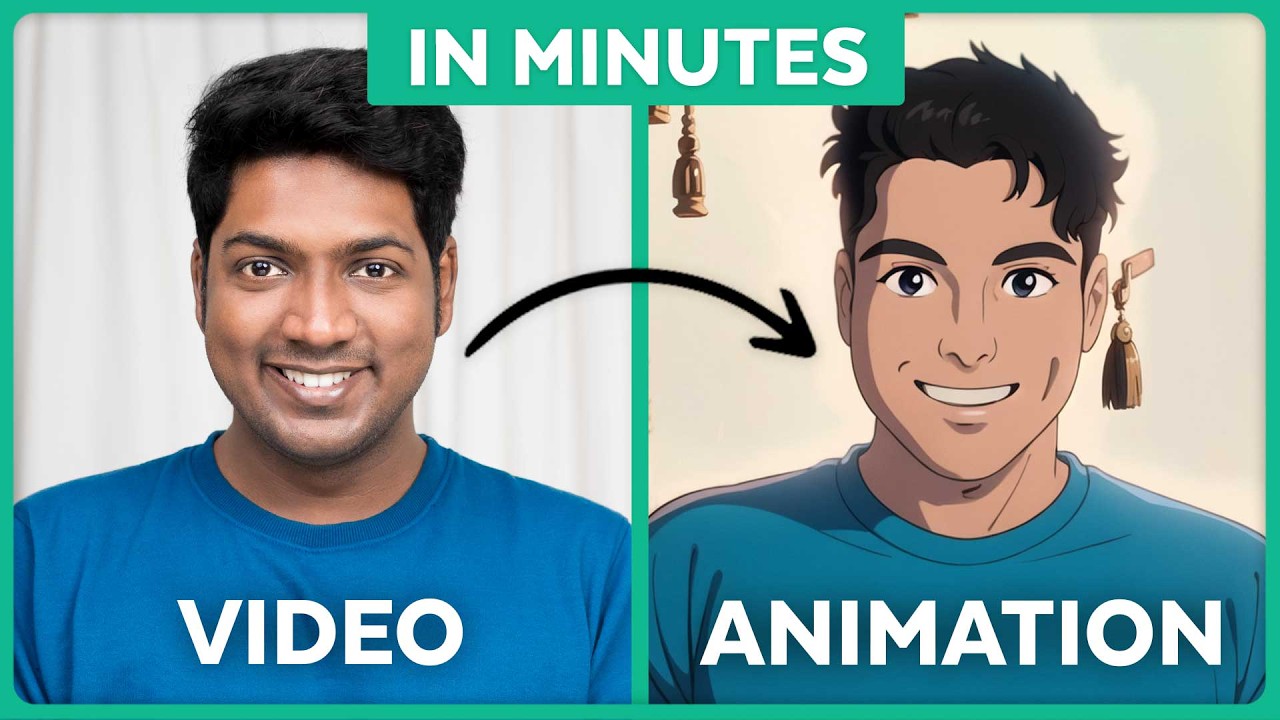Anime, with its distinctive style and emotional storytelling, has become a powerful creative language in the digital age. From TikTok edits to YouTube storytelling, creators are now exploring ways to make their content look like it’s straight out of a Japanese animated series. How To Convert Any Video To ANIME Style
One of the most exciting trends is the ability to convert real-life videos into anime-style visuals using AI and digital tools. This transformation not only looks visually impressive but also adds an artistic flair that sets your content apart from the crowd.
In this post, we’ll dive deep into how you can take any regular video and turn it into an anime-style animation—without needing to be a professional animator.
The Rise of Anime Style in Digital Content
Anime-inspired aesthetics have taken over social media. Whether it’s facial filters, stylized intros, or entire videos reimagined with pastel tones and dramatic shading, the anime effect is everywhere.
But what’s fueling this trend? The answer is simple: accessibility.
In the past, anime-style animation was only possible for skilled artists or large studios. Today, thanks to AI and machine learning models, anyone with a smartphone or computer can recreate this look in a matter of minutes.
What Makes Anime Style So Unique?
To successfully replicate anime in your videos, it’s important to understand the features that define the style:
Expressive Eyes & Facial Details
Sharp Line Art
Stylized Shadows
Smooth Color Gradients
Fantasy-like Backgrounds
AI tools trained on anime data can mimic these features and apply them to your existing footage.
Essentials You Need to Start
To get started with anime-style video conversion, you’ll need the following:
- A Source Video
Pick a clip you want to transform. It could be a reaction video, a cinematic short, or a simple vlog.
- AI-Powered Tools or Software
There are various tools you can use, both free and premium:
AnimeGANv2 (Open-source, trained on anime styles)
Toonify, CartoonGAN, and similar AI models
Mobile apps like CapCut or Veed.io
Cloud tools like Google Colab or Replicate
- Editing Software (Optional)
To fine-tune or enhance your final video:
Adobe Premiere Pro
DaVinci Resolve
CapCut (for mobile)
Method 1: AnimeGAN-Based Conversion (Best for Detailed Results)
If you’re serious about getting high-quality anime transformation, AnimeGANv2 is a powerful tool. Here’s how to use it:
Step 1: Extract Frames from Video
AI models generally work better with still images. Use FFmpeg to break your video into frames.
ffmpeg -i input.mp4 -vf fps=12 frames/frame_%03d.png
This command pulls frames from your video at 12 frames per second.
Step 2: Apply Anime Style to Each Frame
Upload these frames to a cloud-based AnimeGANv2 notebook on Google Colab. The notebook will process each frame and apply an anime filter.
This part is automatic once the code runs—it doesn’t require any programming knowledge.
Step 3: Reassemble Stylized Frames
Once all images are stylized, you’ll need to recompile them into a new video.
ffmpeg -framerate 12 -i output/frame_%03d.png -c:v libx264 output_anime_video.mp4
Step 4: Add Audio (Optional)
If you want to retain the original audio:
ffmpeg -i output_anime_video.mp4 -i input.mp4 -map 0:v -map 1:a -c copy final_video.mp4
Method 2: Convert Videos to Anime Style Using Apps
If the technical method feels overwhelming, no worries! Several apps offer fast and effective anime conversions without any coding.
✅ CapCut
Open the video project
Go to the “Style” tab
Choose the Anime or 3D Cartoon effect
Export and share!
✅ Veed.io
Visit the website
Upload your video
Use the filters to apply anime styling
Download the final version
✅ ToonApp, Prisma, and ToonMe
These are mobile-friendly options ideal for stylized selfies and short clips. They are perfect for social media posts and creative projects.
Helpful Tips for Best Results
Here are some best practices to help you get the most out of your anime conversions:
📌 Keep the Scene Simple
Busy backgrounds or fast movements can distort the effect. Try minimalist settings or slower action scenes.
📌 Ensure Good Lighting
Clear lighting makes it easier for the AI to detect faces and apply accurate styles.
📌 Focus on Facial Expressions
The anime look shines when it can exaggerate expressions. Close-ups of faces give better results.
📌 Consider Manual Touch-Ups
After your AI conversion, you can use video editing tools to enhance colors, add sound effects, subtitles, or transitions for a more cinematic result.
Creative Uses of Anime Video Conversion
Once you have your anime-style video, what can you do with it?
🎬 Create Anime Music Videos
Use this effect for dance covers or music promos with a unique twist.
🎥 Start an Anime-Style Vlog Series
Daily life, but make it animated. This aesthetic is especially popular on TikTok.
🧑🎨 Build an Animated Portfolio
Artists and editors can showcase their skills by turning regular scenes into anime edits.
📢 Promote Products or Brands
Companies can leverage the anime style to connect with younger audiences in a fresh way.
What’s Next? The Future of Anime and AI
We’re currently at a turning point where AI isn’t just assisting artists—it’s becoming the artist. Tools like OpenAI’s Sora (AI-generated video from text prompts) and Runway’s Gen-2 are pushing boundaries even further.
Soon, we might be able to describe a scene like: “A couple walking under cherry blossoms, Studio Ghibli style”—and AI will create a full video from scratch.
The blend of AI and anime will only become richer, faster, and more immersive. So, learning how to work with these tools now puts you ahead of the curve.
Final Thoughts
Turning your real-life videos into anime-style content is no longer a complex dream. With the right tools—whether it’s an AI model or a mobile app—you can now bring your stories to life with a touch of anime magic.
This blend of technology and art has opened up endless opportunities for creators, influencers, musicians, and digital storytellers. Whether you’re aiming to go viral or simply exploring a new artistic style, anime video conversion is a fun, rewarding, and creative journey.
